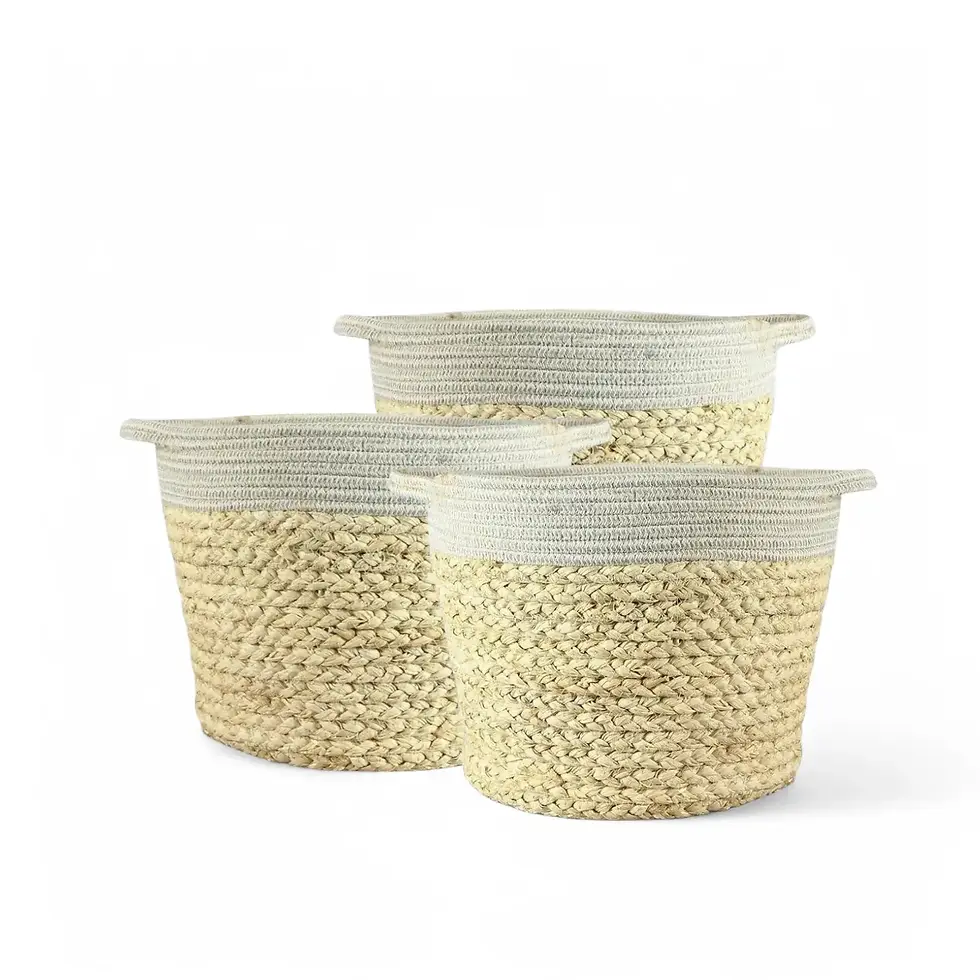Musa acuminata 'Dwarf Cavendish' - Compact Banana Plant with Tropical Charm
Musa acuminata 'Dwarf Cavendish' brings the lush, tropical feel of banana plants into your home with its striking, broad leaves and fast-growing nature. This compact variety stays manageable in size, making it an excellent choice for indoor plant lovers looking to add a bold, green statement. Its large, paddle-shaped leaves emerge with deep burgundy speckles, which fade as the foliage matures into a rich green. Under the right conditions, this plant can even produce small, edible bananas, though its primary appeal lies in its dramatic foliage and rapid growth.
Musa acuminata 'Dwarf Cavendish' - Key Characteristics and Unique Traits
- Compact Size: Reaches around 1.2-2 m indoors, making it ideal for spacious interiors.
- Striking Foliage: Young leaves display red speckling, which fades to green as they grow.
- Fast Growth: Thrives in warm, humid conditions and grows rapidly with proper care.
- Potential for Fruiting: While grown primarily for its leaves, it may produce bananas in optimal conditions.
Essential Information About Musa acuminata 'Dwarf Cavendish'
Originating from Southeast Asia, Musa acuminata 'Dwarf Cavendish' is a cultivated banana variety bred for its smaller stature while retaining the large, dramatic foliage characteristic of banana plants. In its natural habitat, banana plants grow in warm, humid regions with abundant rainfall and temperatures ranging from 22-30°C. Indoors, it maintains a compact growth habit, reaching a maximum height of about 1.2-2 m with a spread of up to 1.5 m. It grows upright, with its leaves arching outward to create a lush, tropical display.
Toxicity
Musa acuminata 'Dwarf Cavendish' is non-toxic to pets and humans, making it a safe addition to households with animals.
Caring for Your Musa acuminata 'Dwarf Cavendish'
- Placement: Prefers a bright, warm location away from cold drafts.
- Light: Thrives in bright, indirect light but can tolerate some direct sunlight.
- Watering: Keep soil consistently moist but not soggy. Allow the top 2-3 cm of soil to dry between waterings.
- Humidity: Requires high humidity levels (above 50%); use a humidifier if necessary.
- Temperature: Best kept in 22-28°C; avoid temperatures below 15°C.
- Soil: Well-draining, nutrient-rich potting mix with added organic matter.
- Repotting: Repot every 1-2 years or when roots outgrow the pot.
- Fertilizing: Feed with a balanced liquid fertilizer every 2-4 weeks.
- Propagation: Can be propagated by separating offshoots (pups) from the main plant.
- Hydroponics: Can adapt to semi-hydroponic setups using inert substrates.
- Pruning: Remove dead or damaged leaves regularly to promote healthy growth.
Potential Problems with Musa acuminata 'Dwarf Cavendish' and How to Fix Them
- Yellowing Leaves: Could indicate overwatering; ensure proper drainage.
- Browning Leaf Edges: Usually due to low humidity; increase moisture levels.
- Drooping Leaves: Often a sign of inconsistent watering; keep soil evenly moist.
- Spider Mites / Mealybugs: Wipe leaves with neem oil or use insecticidal soap.
- Root Rot: Avoid waterlogging by using well-draining soil and pots with drainage holes.
Additional Considerations for Musa acuminata 'Dwarf Cavendish'
Musa acuminata 'Dwarf Cavendish' grows best with strong, stable support. In ideal conditions, it will continuously produce new leaves, creating a dense, vibrant display. Understanding its natural growth habits will help you replicate the best possible environment indoors, ensuring a thriving plant.
The Name Behind Musa acuminata 'Dwarf Cavendish'
The genus Musa comes from the Arabic name for bananas, while acuminata means "pointed," referring to the shape of the fruit. The 'Dwarf Cavendish' variety was named after William Cavendish, the 6th Duke of Devonshire, who helped popularize the banana in Europe.
Frequently Asked Questions About Musa acuminata 'Dwarf Cavendish'
- Can Musa acuminata 'Dwarf Cavendish' grow bananas indoors? Yes, but it requires very bright conditions and consistent warmth to flower and produce fruit.
- How fast does Musa acuminata 'Dwarf Cavendish' grow? It grows rapidly, producing new leaves regularly when kept in warm, humid conditions.
- Can Musa acuminata 'Dwarf Cavendish' be grown in low light? No, it needs bright, indirect light to thrive. In low light, growth slows, and leaves may become weak.
Order Your Musa acuminata 'Dwarf Cavendish' Today
Bring a touch of the tropics into your home with Musa acuminata 'Dwarf Cavendish.' Its striking foliage, rapid growth, and easy-care nature make it a standout choice. Order now and enjoy lush, tropical greenery indoors!
Musa acuminata 'Dwarf Cavendish'
Musa 'Dwarf Cavendish' comes in following sizes:
Baby Plant– is approximately 15 cm tall and comes in a ⌀ 6 cm pot.
S – is approximately 35 cm tall and comes in a ⌀ 12 cm pot.
M – is approximately 65 cm tall and comes in a ⌀ 17 cm pot.
L – is approximately 80 cm tall and comes in a ⌀ 21 cm pot.























































